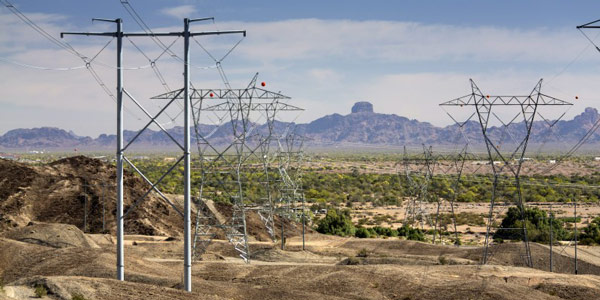By Robert Mullin
FERC rejected for a second time Arizona Public Service’s proposed rules over how external resources can use dynamic scheduling to participate in the Western Energy Imbalance Market (EIM).
The commission ruled that APS’ tariff changes failed to comply with an April 29 directive to “clarify that dynamically scheduled external resources are not required to enter into commercial contracts with APS in order to participate in the EIM” (ER16-938).
FERC’s Sept. 26 order affirmed that APS could require dynamically scheduled external resources to have the technical capability to provide load-following and regulation services, but it said APS could not condition eligibility on their provision of the services.
“Consistent with the April 29 order, we affirm that APS may not condition a dynamically scheduled external resource’s participation in the EIM on its contracting to provide load-following or regulation service to APS,” the commission wrote.
The ruling came just days before APS is slated to join the EIM. The utility is scheduled to begin transacting in the market Oct. 1 along with Puget Sound Energy. (See New Western EIM Members on Track to Join Market in October.)
EIM members PacifiCorp and NV Energy currently restrict external EIM participation to only those resources pseudo-tied into their respective balancing areas. While APS will allow EIM transfers via pseudo-ties, the utility elected to further extend market participation to those external resources equipped to dynamically schedule into its transmission network.
But APS required that dynamically scheduled resources meet the tariff-defined qualifications of a Balancing Authority Area Resource (BAAR).
Under the EIM’s rules, a BAAR designation denotes a resource’s eligibility to contribute to an EIM participant’s “available balancing capacity” — the verifiable operating reserves a market participant carries to ensure that it isn’t leaning on the EIM to meet its capacity requirements.
APS’ tariff proposal included requirements that a BAAR resource be unit-specific rather than an unspecified system resource and be able to provide regulation and load-following services to help the utility to meet its resource adequacy criteria.
The proposal also required that a BAAR either be owned by APS or under contract with the utility for energy, ancillary services or capacity.
In its April order, the commission objected to that last provision and directed the utility to clarify that external resources do not have to qualify as a BAAR in order to transact with the EIM.
Instead of inserting a new provision covering dynamically scheduled resources, APS’ compliance filing redefined BAARs to exclude the ownership and contracting requirements. The utility expressed concern that removing the BAAR provision could enable resources to circumvent operational and technical specifications applicable to all resources participating in the EIM — specifications already approved by FERC. APS also contended that, by revising the definition to eliminate the commercial relationship requirement, it had complied with FERC’s directive.
The commission disagreed, saying that “APS has failed to comply with the directive to remove the requirement that an external resource qualify as a BAAR to be eligible to participate via dynamic scheduling.”
The BAAR qualification is “commercial in nature,” given that APS’ tariff still required any resource designated as such to provide load-following and regulation service, the commission found.
Market participants’ transactions in the EIM are expected to be voluntary and not subject to such obligations, FERC said. While an external resource participating in the EIM can enter a contract to provide ancillary services to APS, it cannot be required to do so, the commission said.
The commission ordered APS to restore the original commercial language to the BAAR qualification in order to ensure that APS and CAISO, the EIM’s operator, can identify those resources that contribute to the utility’s EIM capacity requirement.
“In the context of the available balancing capacity mechanism, it is crucial that APS either own or have a contractual right to call upon the capacity for regulation or load-following services from a designated resource,” the commission wrote.
Other elements of the ruling include:
- FERC affirmed APS’s requirement that external resources participating in the EIM via dynamic scheduling be capable of responding on a unit-specific basis. “As APS notes, requiring that resources be unit-specific, will ensure that APS can distinguish an external resource’s dynamic schedule from an intertie bid,” FERC wrote.
- The commission denied a rehearing request by the Southwest Public Power Agency (SPPA) over its approval of APS’s proposal to adopt EIM pricing of transmission losses without giving transmission customers the option of self-supplying losses within the same hour. The commission said FERC precedent does not “preclude the use of a financial settlement mechanism to the exclusion of in-kind replacement of losses.”
- The commission directed APS to submit a compliance filing providing more details about the timing and duration of its evaluation of operating reserve obligation payments and credits from CAISO. SPPA contended that APS has not committed to ensuring that customers will share in the benefits of reduced reserve costs resulting from EIM participation.




